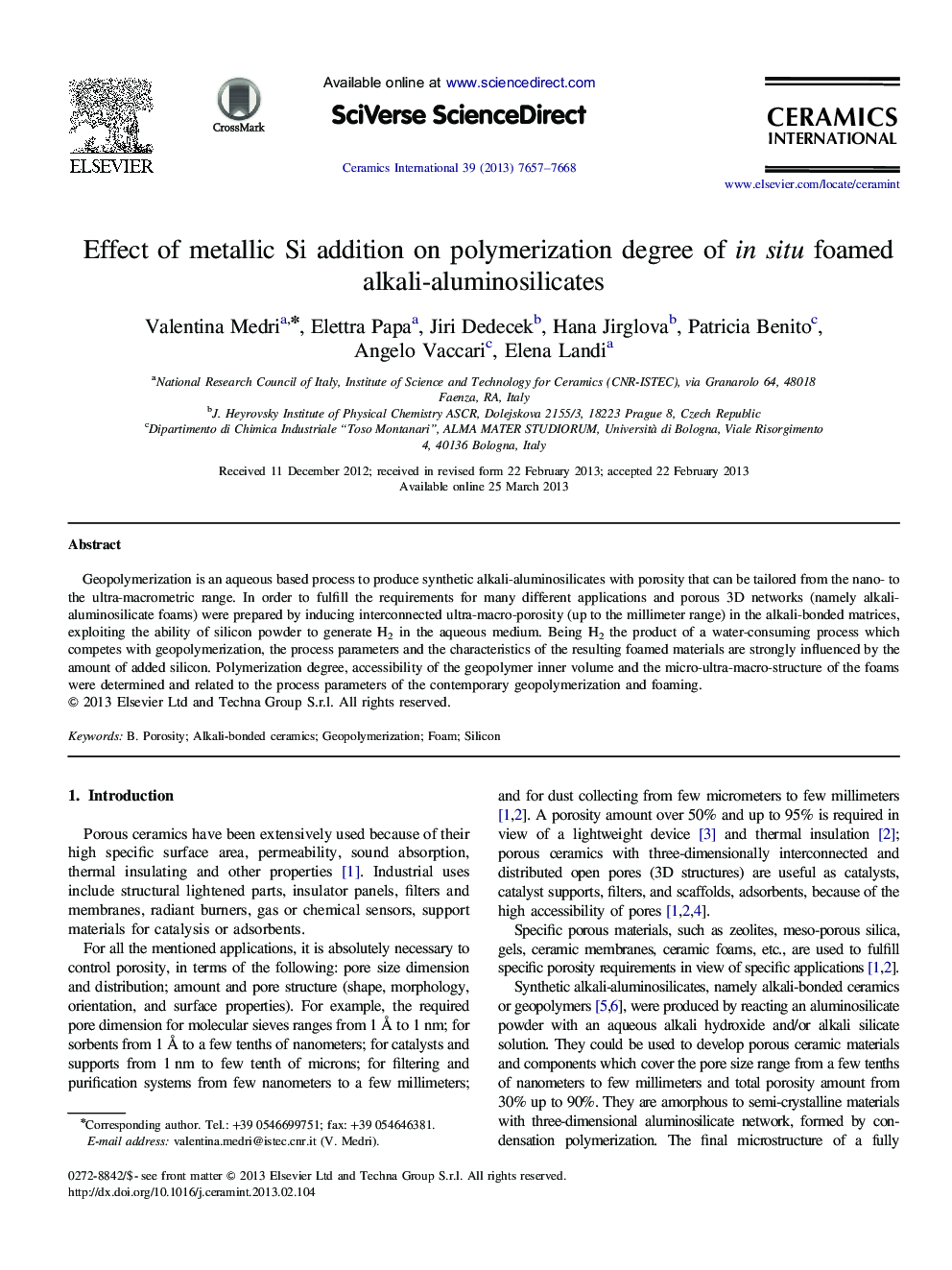| Article ID | Journal | Published Year | Pages | File Type |
|---|---|---|---|---|
| 10625625 | Ceramics International | 2013 | 12 Pages |
Abstract
Geopolymerization is an aqueous based process to produce synthetic alkali-aluminosilicates with porosity that can be tailored from the nano- to the ultra-macrometric range. In order to fulfill the requirements for many different applications and porous 3D networks (namely alkali-aluminosilicate foams) were prepared by inducing interconnected ultra-macro-porosity (up to the millimeter range) in the alkali-bonded matrices, exploiting the ability of silicon powder to generate H2 in the aqueous medium. Being H2 the product of a water-consuming process which competes with geopolymerization, the process parameters and the characteristics of the resulting foamed materials are strongly influenced by the amount of added silicon. Polymerization degree, accessibility of the geopolymer inner volume and the micro-ultra-macro-structure of the foams were determined and related to the process parameters of the contemporary geopolymerization and foaming.
Related Topics
Physical Sciences and Engineering
Materials Science
Ceramics and Composites
Authors
Valentina Medri, Elettra Papa, Jiri Dedecek, Hana Jirglova, Patricia Benito, Angelo Vaccari, Elena Landi,
